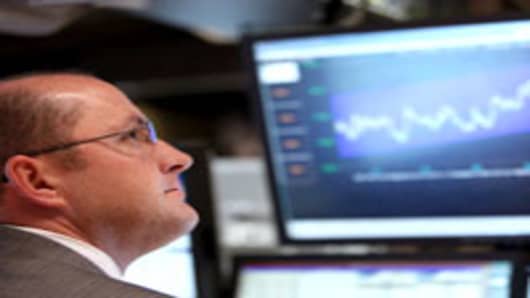“Stocks are cheap,” Cooperman, head of Omega Advisors, told CNBC on Wednesday. “The stock market is cheap relative to inflation, it’s cheap relative to its own history, it’s cheap relative to interest rates.”
Birinyi, meanwhile, repeated his wildly bullish calls, saying he expects the Standard & Poor’s 500 to surge to 2,100 within the next couple of years. Meanwhile, Miller said forward earnings estimates in relative terms—comparing stock levels to earnings per share on the S&P—are only slightly more expensive than at the market bottom in March 2009.
Lots of investors seem to agree with this theme.
No amount of bad news can derail the rally. Over the past five weeks or so the market has weathered a government overthrown in Egypt, an epic natural disaster in Japan and US military involvement in Libya. That’s not to mention the debt-crisis overhang in Europe and the US as well as inflation trends that are getting harder to ignore.
Yet for all that damage the S&P has lost a grand total of 3 percent when many experts had been looking for the pullback to hit at least 7 to 10 percent.
It’s tough to argue with what appears to be a Teflon market.
“Despite further declines in new home sales, negative news about Tokyo’s drinking water, and sovereign debt downgrades, equity prices are moving farther from their recent lows,” Sam Stovall, chief equity strategist at S&P, wrote in a note to clients.
David Bianco, the chief strategist at Bank of America Merrill Lynch, warned clients recently against selling into weakness and looking for re-entry points later. He reasoned that at 13.7 times forward earnings estimates, the S&P 500 stocks still look cheap, making dips buying opportunities.
So is all this bullishness and value enthusiasm right?
While fighting the money-printers is always a dangerous business, there appear to be more than passing concerns that investors who think stocks at current levels are cheap could be deluding themselves.
Credit Suisse analyst Douglas Cliggott notes that corporate profit margins appear to have stalled around 12.7 percent. If that’s the case, prior history suggests average stock returns are just 2 percent per year. Cliggott also is suspicious of EPS estimates of $97 in 2011 and $111 for 2012, calling the consensus forecasts “very aggressive.”
“If the profit share has, in fact, hit a cycle peak, it would suggest we are entering an environment of low expected returns for US equities,” he wrote in a research note.
Analysts at Barclays Capital also cautioned about the “stocks are cheap” theme, arguing that the economic recovery may be nearing a peak.
“We are no longer in an environment where confirmation of the sustainability of economic recovery reduces risk premiums and generates a revaluation of cheaply priced assets,” Barclays told clients. “Instead, asset prices are closer to fair value and stronger growth is now accompanied by signs of higher inflation and an increased probability of policy tightening.”
Indeed, those final two words are likely to be key as the market looks for gains in a modestly steadying economy. The real bet, then, may not be on whether growth has reached a plateau but whether stocks can keep rolling once the Federal Reserve ends its easing program and takes off the training wheels. The market has never been the beneficiary of such monetary largesse before, so cutting the cord could be a shock greater than any of the global storms that have come along.
And maintaining momentum will be even more difficult if the assumption about stocks still being cheap is incorrect.
Yale economist Robert Shiller’s Cyclically Adjusted P/E ratio, which looks at earnings over a 10-year period as a way to account for volatility, is at a lofty 23.7, which “suggests an overvaluation of 40% relative to historic norms,” said David Rosenberg, chief economist and strategist at Gluskin Sheff in Toronto.
Investor sentiment, too, has become bearish, with the American Association of Individual Investors at a below-average 37.7 percent bullish while bears are at a historically elevated 35 percent.
Yet even within the AAII survey, which once served as reliable contrarian indicator but for months has been more or less in direct correlation with market movements, respondents marvel at the ability of the market to withstand virtually any storm.
“I am amazed at the resilience of the market given all of the bad news,” one respondent said. “It just keeps bobbing up like a cork.”
____________________________________
Questions? Comments? Email us at NetNet@cnbc.com
Follow Jeff @ twitter.com/JeffCoxCNBCcom
Follow NetNet on Twitter @ twitter.com/CNBCnetnet
Facebook us @ www.facebook.com/NetNetCNBC



